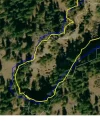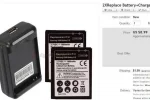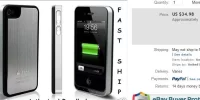CJ Williams
Active Member
- Time of past OR future Camino
- Via Turonense (1995)
Camino Francés (1996; 1999; 2001; 2005; 2008; 2011)
Camino Aragonés (2000)
I posted this information as part of an answer to a question someone asked me on another thread, but I think it bears posting as a thread of its own because of its importance.
A smartphone with GPS and 3G coverage should be considered another piece of safety equipment that you bring along on the Camino, if you have one. If you do, you should definitely carry yours with you and have the GPS location mode switched on. Even if your battery dies and you lose call coverage, the Guardia Civil or other emergency rescue services can use the GPS to locate you in an emergency situation.
Additionally, install the WhatsApp application, or some other instant messaging application, that allows you to send photos and videos in instant messages. (WhatsApp is the most commonly used one in Spain.) If you are lost or become injured in a remote area, you can take photos of landmarks or the surrounding countryside, or a screenshot of your location on Google maps using the GPS, and send it to the dispatcher or the officer you are talking to on the phone, helping them to locate you more quickly.
The procedure is simple: first call 112, the emergency services number in Spain. If you are unsure of your location, explain that you are lost or injured and don't know where you are to the dispatcher. He or she will ask you to take note of the mobile telephone number of one of the members of the rescue unit and to add it to your address book to make conversation by Whatsapp possible.
Once contact is established with the rescuer, you will have to follow the same steps you normally would to send a picture. Make sure to allow the use of GPS by the WhatsApp so that the phone can "geolocate" you. Rescuers say that this normally works to within a margin of error of ten meters, more or less! Taking note of your coordinates by conversation often meant having to search within a radius of five kilometers or more before being able to successfully locate the person needing rescue.
Nevertheless, this system cannot take the place of EXPERIENCE and PRUDENCE. You still need to be prudent when walking the more remote or mountainous sections of the Camino. Pay close attention to weather forecasts, listen to the advice of locals and carry the proper equipment for the season in which you are travelling the Camino!
A smartphone with GPS and 3G coverage should be considered another piece of safety equipment that you bring along on the Camino, if you have one. If you do, you should definitely carry yours with you and have the GPS location mode switched on. Even if your battery dies and you lose call coverage, the Guardia Civil or other emergency rescue services can use the GPS to locate you in an emergency situation.
Additionally, install the WhatsApp application, or some other instant messaging application, that allows you to send photos and videos in instant messages. (WhatsApp is the most commonly used one in Spain.) If you are lost or become injured in a remote area, you can take photos of landmarks or the surrounding countryside, or a screenshot of your location on Google maps using the GPS, and send it to the dispatcher or the officer you are talking to on the phone, helping them to locate you more quickly.
The procedure is simple: first call 112, the emergency services number in Spain. If you are unsure of your location, explain that you are lost or injured and don't know where you are to the dispatcher. He or she will ask you to take note of the mobile telephone number of one of the members of the rescue unit and to add it to your address book to make conversation by Whatsapp possible.
Once contact is established with the rescuer, you will have to follow the same steps you normally would to send a picture. Make sure to allow the use of GPS by the WhatsApp so that the phone can "geolocate" you. Rescuers say that this normally works to within a margin of error of ten meters, more or less! Taking note of your coordinates by conversation often meant having to search within a radius of five kilometers or more before being able to successfully locate the person needing rescue.
Nevertheless, this system cannot take the place of EXPERIENCE and PRUDENCE. You still need to be prudent when walking the more remote or mountainous sections of the Camino. Pay close attention to weather forecasts, listen to the advice of locals and carry the proper equipment for the season in which you are travelling the Camino!






















